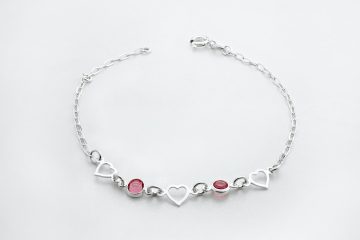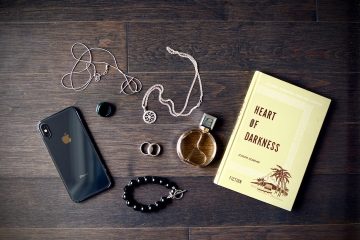Are you looking to embark on a creative journey of making friendship bracelets? Whether you’re a complete beginner or an experienced crafter, having the right supplies is crucial to ensure a successful and enjoyable bracelet-making experience. In this article, we will explore the essential supplies you need to know to get started on your friendship bracelet-making adventure. From colorful threads to sturdy tools, we’ve got you covered!
1. Quality Embroidery Floss: The Foundation of Friendship Bracelets
When it comes to making friendship bracelets, the most fundamental supply you’ll need is quality embroidery floss. Embroidery floss is a type of thread made specifically for embroidery and other needlework crafts. It is available in a wide range of colors, allowing you to create vibrant and visually appealing bracelets.
Embroidery floss is typically made from cotton or a cotton blend, which ensures its durability and ease of use. It’s important to choose floss that is smooth and doesn’t easily fray, as this will make your bracelet-making process much smoother. Additionally, opt for floss that is colorfast, meaning it won’t bleed or fade when exposed to water or sunlight.
2. Scissors: The Cutting Edge
To create neat and precise cuts while making friendship bracelets, a good pair of scissors is an absolute must-have. Look for scissors with sharp blades that can easily cut through multiple strands of embroidery floss without causing any fraying. It’s best to have a dedicated pair of scissors solely for your bracelet-making projects to keep them sharp and in good condition.
3. Beads: Adding a Touch of Glamour
If you want to take your friendship bracelets to the next level, incorporating beads can add a touch of glamour and uniqueness to your designs. Beads come in various sizes, shapes, and materials, such as glass, plastic, wood, or metal. Choose beads that match the style and aesthetic you’re aiming for, and consider mixing different types to create eye-catching patterns.
When using beads in your friendship bracelets, make sure to select ones with holes large enough to accommodate the embroidery floss. This will make it easier to thread them onto your bracelet without any hassle.
4. Tape Measure or Ruler: Precision Matters
To ensure your friendship bracelets fit perfectly, having a tape measure or ruler is essential. This tool will help you measure the length of your bracelet accurately, preventing it from being too loose or too tight. You can use a flexible tape measure or a standard ruler, depending on your preference. Keep in mind that some bracelets may require specific measurements, such as anklet-style bracelets or bracelets with adjustable closures.
5. Clipboard or Safety Pin: Keeping Things in Place
When it comes to making friendship bracelets, keeping your work in place while you weave is crucial. A clipboard or a safety pin can be incredibly helpful in securing your bracelet to a stable surface or your clothing, allowing you to work with ease. This will prevent your bracelet from sliding around or unraveling as you progress.
If you opt for a clipboard, choose one with a smooth surface that won’t snag your embroidery floss. On the other hand, if you prefer using a safety pin, attach it to your clothing near the working area, ensuring it doesn’t hinder your movement.
6. Tape or Thread Bobbins: Organize Your Threads
To keep your embroidery floss organized and tangle-free, using tape or thread bobbins is highly recommended. These small, flat objects allow you to wind your threads neatly around them, keeping them organized and easily accessible.
Using tape or thread bobbins is particularly useful when working with multiple colors or when making complex patterns. It prevents your threads from getting tangled and saves you time by providing a clear view of the available colors at a glance.
7. Beading Needles: For Precise Beadwork
If you’ve decided to incorporate beads into your friendship bracelets, having a set of beading needles is essential. Beading needles are thinner and longer than regular sewing needles, allowing you to easily thread beads onto your embroidery floss. They come in different sizes to accommodate various bead types and sizes.
When using beading needles, ensure you have a needle that is long enough to fit through the bead’s hole without causing any damage. This will make your beadwork precise and hassle-free.
8. Closures: Finishing Touches
To complete your friendship bracelets, you’ll need closures that secure the ends together. There are numerous closure options available, such as lobster clasps, button closures, or adjustable sliding closures. Choose closures that match your bracelet’s style and functionality.
Lobster clasps and button closures are great for bracelets with fixed lengths, while adjustable sliding closures offer flexibility and allow the wearer to adjust the bracelet’s size. Consider the ease of use and comfort when selecting the closure for your friendship bracelet.
9. Beading Mat or Tray: Keeping Beads in Place
If you’re working with beads, a beading mat or tray can be a valuable addition to your supplies. These mats or trays are designed to prevent beads from rolling off the table or getting lost. They provide a designated workspace for your beadwork, keeping everything organized and within reach.
Beading mats are usually made of fabric, while beading trays are made of plastic and often have compartments for sorting beads. Choose the option that suits your preferences and working style.
10. *Macramé Board: A Versatile Tool*
A macramé board can be an excellent investment if you plan to explore more intricate bracelet-making techniques, such as macramé knots. This board has specific slots and grooves that help you create consistent and precise knots. It also prevents your work from shifting or unraveling as you progress.
While a macramé board is not essential for basic friendship bracelet-making, it can be a valuable tool if you’re interested in expanding your skills and creating more intricate designs.
11. *Design Templates: Unlocking Creativity*
Design templates or pattern guides can be immensely helpful, especially for beginners looking to explore different bracelet patterns and styles. These templates provide step-by-step instructions and visual references, allowing you to create beautiful bracelets without worrying about design choices.
You can find design templates in craft books, online resources, or even create your own. They are a great way to unlock your creativity and experiment with various patterns.
12. *Storage Containers: Tidy and Organized*
As your collection of embroidery floss, beads, and other supplies grows, having storage containers will help keep everything tidy and easily accessible. Consider investing in small boxes, plastic organizers, or bead storage containers to separate and store your supplies systematically.
Label each container or drawer to quickly locate the specific colors or materials you need for your bracelet-making projects. This will save you time and prevent frustration when searching for the perfect thread or bead.
13. *Inspiration Board: Sparking Creativity*
An inspiration board is a fantastic tool to gather ideas and spark your creativity. Use a bulletin board or a digital platform to collect images, color palettes, and patterns that inspire you. Having a visual reference can help you plan your bracelet designs and experiment with new techniques.
Pin or save images of bracelets you admire, color combinations you find appealing, or even photographs from nature that inspire your creativity. Let your inspiration board be a source of motivation and a catalyst for creating unique friendship bracelets.
14. *Patience and Persistence: The Essential Supplies Within You*
While physical supplies are crucial for making friendship bracelets, don’t forget that patience and persistence are the most important supplies you carry within yourself. Bracelet-making can be a meditative and enjoyable process, but it also requires time, practice, and a willingness to learn from mistakes.
Embrace the learning curve, experiment with different techniques, and allow yourself room for creativity. With patience and persistence, you’ll create beautiful friendship bracelets that reflect your unique style and the bonds you share with your friends.
15. *Conclusion*
Friendship bracelet-making is a delightful craft that allows you to express your creativity and create meaningful handmade gifts. By gathering the essential supplies mentioned in this article, such as quality embroidery floss, scissors, beads, tape measure, and closures, you’ll be well-equipped to begin your bracelet-making journey.
Remember to keep your supplies organized and accessible with the help of tape or thread bobbins, storage containers, and a beading mat or tray. Explore additional tools like beading needles, a macramé board, and design templates as you advance in your bracelet-making skills.
Lastly, don’t forget to bring along your patience and persistence. Bracelet-making is a wonderful opportunity to relax, enjoy the process, and connect with your creative side. So, gather your supplies, let your imagination run wild, and start making beautiful friendship bracelets!
16. *FAQs*
Q1: Can I use regular sewing thread instead of embroidery floss for making friendship bracelets?
A1: While it’s possible to use regular sewing thread for making friendship bracelets, it may not be as durable or vibrant as embroidery floss. Sewing thread is generally thinner and can easily break under tension. Embroidery floss, on the other hand, is specifically designed for crafts like bracelet-making and provides better strength and color options.
Q2: How many strands of embroidery floss should I use for making friendship bracelets?
A2: The number of strands you use depends on the desired thickness and look of your bracelet. Most friendship bracelets are made using 6 strands of embroidery floss, but you can experiment with more or fewer strands to achieve different effects. Thicker bracelets may require 8 or more strands, while delicate bracelets can be made with 2 or 4 strands.
Q3: Can I use a regular needle instead of a beading needle for adding beads to my friendship bracelets?
A3: Regular needles can be used to add beads to your friendship bracelets, but they may not be as efficient or suitable as beading needles. Beading needles are thinner and longer, making it easier to thread beads with small holes. Regular needles may cause the bead’s hole to stretch or even break, especially if the bead is made of delicate material.
Q4: How do I clean my friendship bracelets if they get dirty?
A4: Cleaning friendship bracelets depends on the materials used. If your bracelet is made entirely of embroidery floss, you can gently hand wash it using mild soap and water. Rinse it thoroughly and let it air dry. However, if your bracelet incorporates beads or other non-fabric materials, it’s best to spot clean the fabric parts and avoid soaking the entire bracelet.
Q5: Can I make friendship bracelets without any tools or supplies?
A5: While having the recommended supplies enhances your bracelet-making experience, it’s possible to create friendship bracelets with minimal tools and materials. You can use your fingers to hold the threads and tie knots, or even fashion a makeshift loom using everyday items like cardboard or a clipboard. Get creative with what you have and enjoy the process of making unique friendship bracelets!




